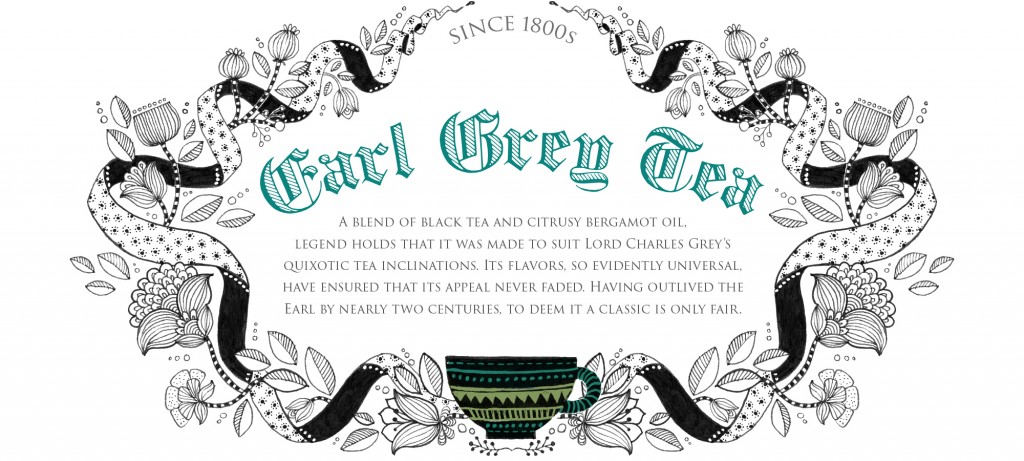A couple of weeks ago I woke up to a mysterious sounding text on the Teabox chat page. The entire R&D team seemed to have gone delirious having received a consignment of bergamot extract after two months of struggle with the custom clearance authorities. Now, l have never really witnessed somebody be so crazy happy on receiving a fruit extract but this wasn’t just any fruit extract, now was it. This was Bergamot, the posher relative of the ordinary orange, the one that made it through evolution with its “fruit” qualities intact: a perfect form, bright color, pulpy insides and a trademark citrusy-sweet perfume that travels faster through the room than you can say ‘bergamot’. But what’s probably made it so deserving of its fame is that it’s the key ingredient in the most famous of tea blends, the Earl Grey.
Earl Grey Tea History – More oriental than Tudor
Much like the English Breakfast, there is no recorded account of how this tea blend came about. But the version I really like (and believe to be the most plausible) dates back to the early 1800s. The story goes that Charles Grey, the second Earl Grey and then-British Prime Minister commissioned a Chinese gentleman (most likely a tea merchant) to create a tea blend that would suit the water at Howick Hall, Northumberland, which had a peculiarly high concentration of lime. The genius that he was, the Chinese gentleman chose bergamot oil – a perfumy, citrusy-sweet extract obtained from bergamot orange – to Chinese black tea (the mostly widely available variety of tea at the time); the scented blend would make a rather tasty version of water, speaking euphemistically.
Naysayers are of the opinion that the blend was created to mask the inferior quality of the Chinese tea back in the day. But, irrespective of the ‘who and why’, the blend’s faithful following stands in gratitude of the person who created it.
[bctt tweet=”There are about 50-odd versions of Earl Grey, from the classic to the outrageous (Earl Grey Matcha).”]
Tea was already a fashionable choice in aristocratic circles at that time. But a blend like the Earl’s bergamot-infused tea spelt gentry. Of course, Lady Grey aided its popularity by serving it to her guests in the many parties she hosted. And the Earl Grey became the choice of the aristocrats.
Many shades of Earl Grey
There are about 50-odd versions of Earl Grey, from the classic to the outrageous (Earl Grey Matcha). It is a tea that’s been moving with the times, with the bergamot offering the counterpoint to any contemporary additions there may be.
How To Choose An Earl Grey
We asked our in-house tea expert, Shruti Tripuraneni to tell us how we can choose an Earl Grey to suit our tastes:
“With a dizzying choice of Earl Greys on offer, the best way is to try a few before you find the one that works. Often, the choice of tea may give you a clue. The classic Earl Grey features a black tea with bergamot oil. But in our quest for personalized tea experiences, we have crafted an Earl Grey of every kind – black, white, green and oolong. This is after sampling 80 odd versions of all!
With our range, a tea enthusiast can pick an Earl Grey that’s more attuned to their preferences and tastes. Say, someone who prefers a low caffeine tea is sure to enjoy our oolong and green tea Earl Grey blends, while those with an especially adventurous palate can try the smoky Earl Grey, made with a high-fired tea. There is an Earl Grey for everyone.”
I may enjoy my Jasmine Earl Grey in a porcelain cup while my tea-noob colleague will guzzle his classic in a 99-cent mug. Ah well, you can still judge a person by their Earl Greys.
Illustration by Handmade by Radhika

